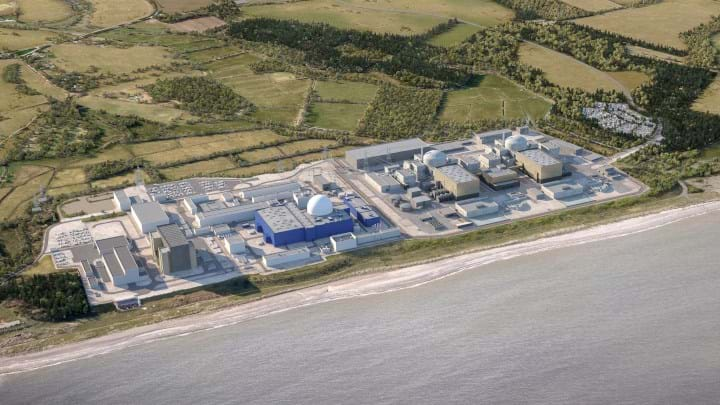UK government announces £170m boost for Sizewell C nuclear project

THE UK government has confirmed it will provide £170m (US$219m) in additional funding to speed up preparations for the construction of Sizewell C nuclear power plant in Suffolk. Amongst other efforts, the funding will go towards securing essential supply chain components and expanding its workforce.
The funding is from the department of energy security and net zero, and is in addition to the UK’s investment of £700m made last year, the government said. With its almost £700m investment in the project, the UK government became a 50% shareholder in the project’s development with French utility company EDF.
Once built Sizewell C is expected to provide low carbon power to the equivalent of 6m homes over 60 years – saving the UK as many as 9m t/y of CO2 emissions.
At the peak of its construction, the plant will support around 10,000 jobs nationwide, with UK businesses set to receive 70% of the total value of construction contracts, the government said.
Like Hinkley Point C in Somerset, the plan for Sizewell C is to build two reactors that will produce 3.2 GW of electricity in total, equivalent to 7% of the UK’s electricity needs.
UK nuclear and networks minister Andrew Bowie said: “The steps we’re taking…will speed up the development of one of our biggest projects, Sizewell C, towards final approval, which would enable construction to start as soon as possible, supporting thousands of jobs for communities in Suffolk and across the country. With government support, our nuclear industry will play a critical role in supplying cleaner, home-grown energy, and boost our energy security by reducing our reliance on fossil fuels from abroad.”
Last year, the government’s independent planning inspectorate advised against approving the project, which will be built next to the existing Sizewell B plant, citing concerns about water supplies for the plant and its impact on local habitats.
However, the business secretary at the time, Kwasi Kwarteng, approved the plans. He said, “that the very substantial and urgent need for the proposal outweighs the harms”.
A nuclear push
The government’s push for Sizewell C comes on the back of its ambitions to provide up to 24GW of the UK’s power from nuclear sources by 2050 – four times the current level.
However, its aspiration is currently stymied by the country’s ageing fleet of nuclear power plants. Heysham 1 in northwest England and Hartlepool in northeast England for example, will both mark 40 years of power generation this year. Both plants were originally due to end generation in 2014, but this has been postponed until 2026. Except for Sizewell B, the rest have either already closed or are due to shut by 2028. Run by EDF, Sizewell B is a pressurised water reactor that is set to close in 2035.
To be able to deliver on its proposal, the government recently launched Great British Nuclear (GBN), a new public body set up to oversee the rapid expansion of nuclear power in the UK.
GBN will support large scale projects, such as Sizewell C and Hinkley Point C, which has been dubbed “the most expensive power station in the world”, as well as emerging nuclear technologies.
Energy security secretary Grant Shapps said: “Following the launch of GBN, and our plans for a massive revival of nuclear power, I am proud to be demonstrating the government’s commitment to the continued development of Sizewell C.
“Our new nuclear fleet will provide clean, reliable, and abundant energy whilst driving down bills, boosting economic growth, and ensure that the UK is never held to energy ransom by tyrants like Putin.”
Recent Editions
Catch up on the latest news, views and jobs from The Chemical Engineer. Below are the four latest issues. View a wider selection of the archive from within the Magazine section of this site.




